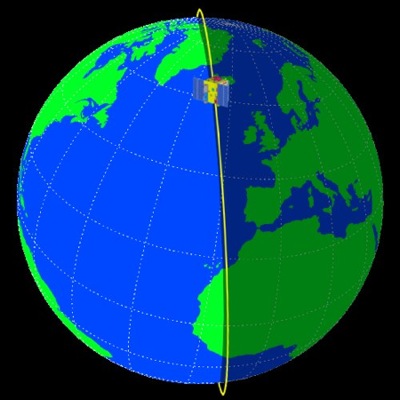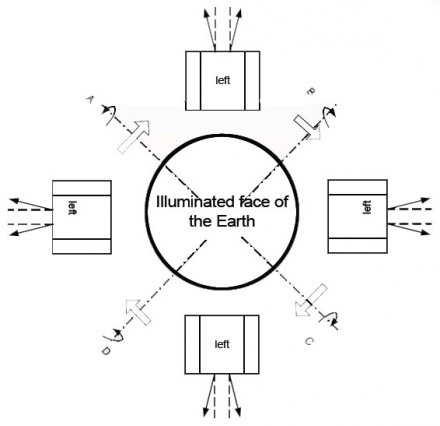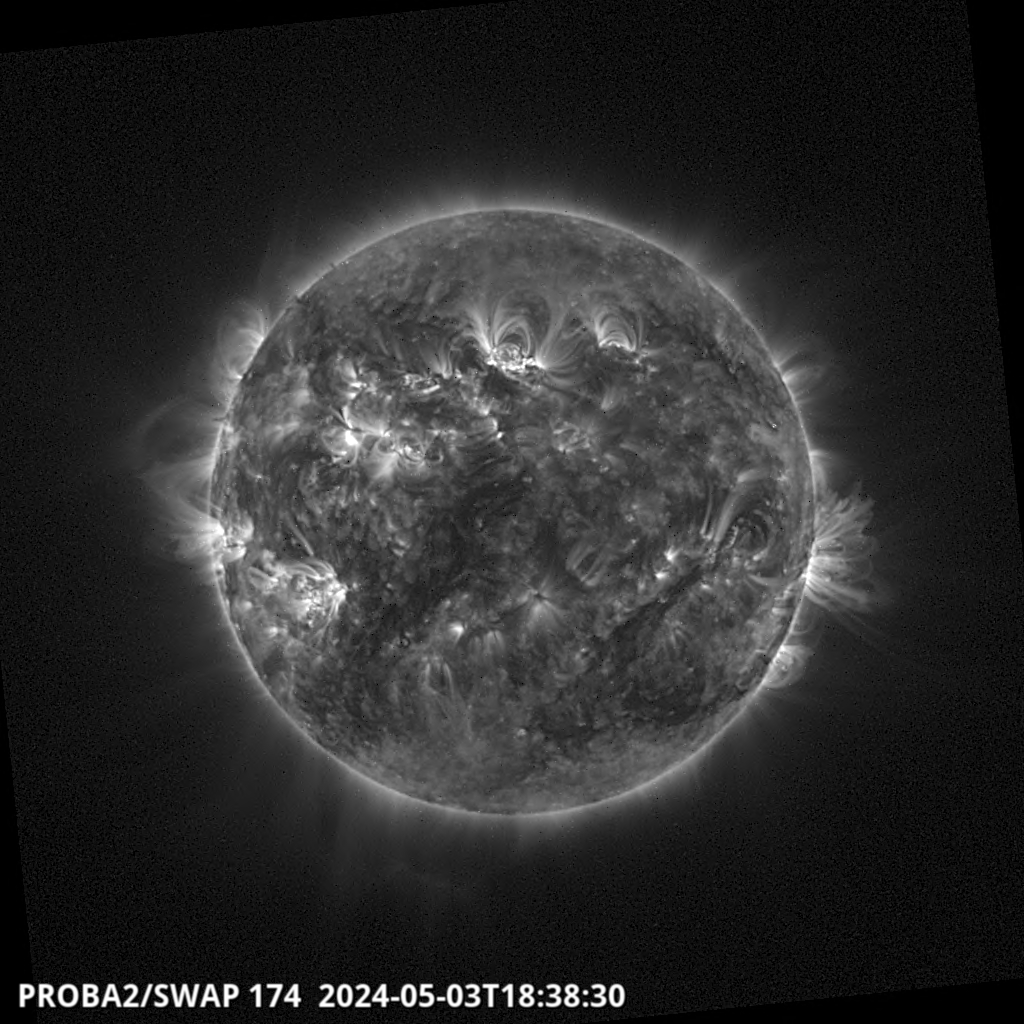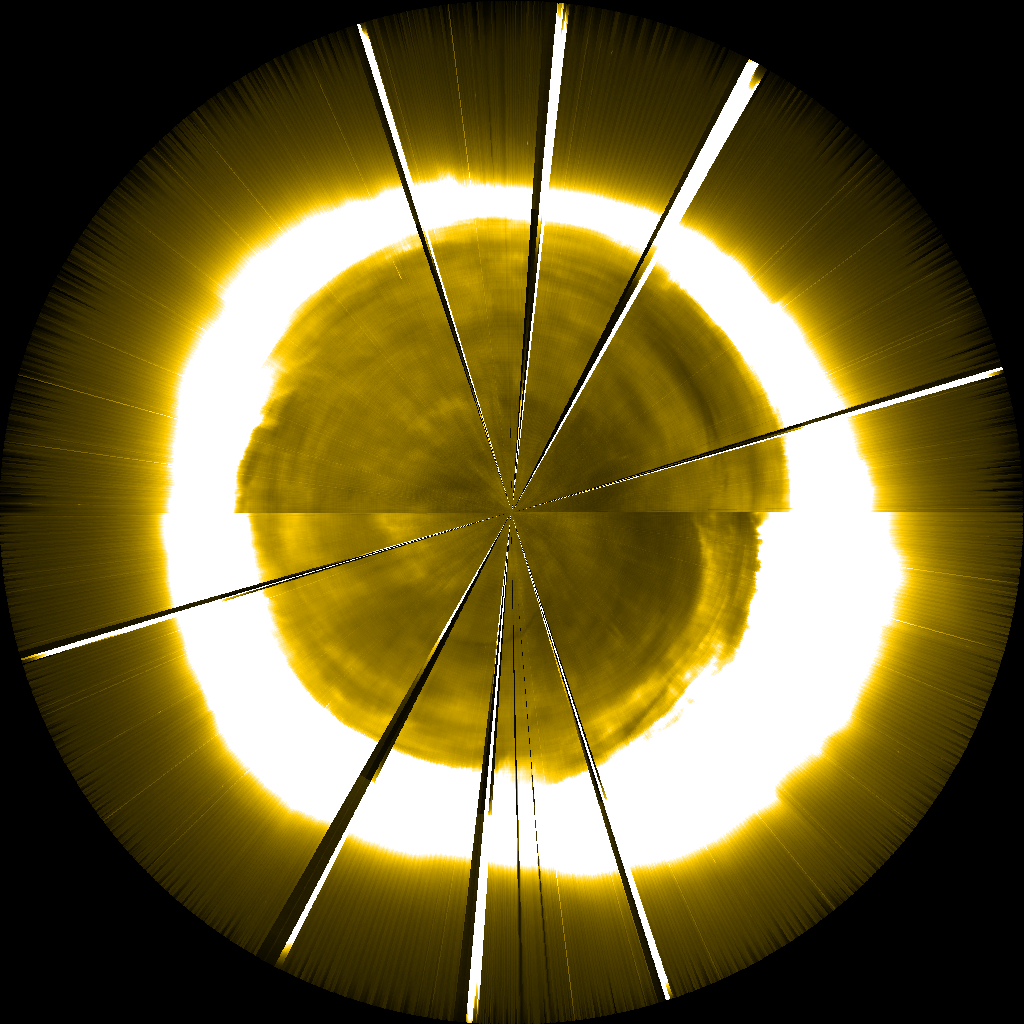For a general description of the launch see this ESA web page.
Because the instruments on PROBA2 are expected to monitor solar conditions around the clock, PROBA2 follows a sun-synchronous orbit. This means that PROBA2’s orbit will track the terminator, following the dividing line between day and night on earth over the poles as in the figure on the right. Sometimes this type of orbit is referred to as a dawn/dusk orbit. As the earth rotates below, PROBA2 remains fixed either at dawn or dusk depending on which side of the planet it is over at the time.
To account for the effects of the earth’s motion around the sun, PROBA2’s orbit must precess by approximately one degree every day, tracking the slow changes of the position of the sun in the sky throughout the year.

- Cartoon of PROBA2’s Orbit
This means that, for most of the year, PROBA2 will have a full-time view of the sun, and will not experience eclipses of the sun behind the earth. However, because the orbit does not follow the terminator exactly, PROBA2 will experience brief periods of several weeks when eclipses of the sun by the earth do occur, specifically around December each year. During approximately 80 days (from November until January), visible eclipses occur every orbit with a duration ranging from a few minutes in November up to a maximum of 18 minutes and back to 0. These eclipses that will last for several minutes of every orbit are also scientifically useful. In this case, they provide an opportunity for onboard instruments to obtain special calibration images that cannot be captured when the spacecraft is in full sun. These images will help us better characterize the response of the SWAP and LYRA instruments to sunlight.
Orbits of this type have been used for solar observing by several satellites that observed the Sun such as Yohkoh, TRACE, and Hinode, affording them a nearly continuous view of the Sun.
Since PROBA2 has only 2 star trackers, which must always have a clear view of the open sky in order to maintain spacecraft attitude control, during an orbit the spacecraft will perform four large-angle rotations of 90 degrees (every 24 minutes). The timing of the maneuvers is such that star trackers are constantly oriented to point as far away from the Earth as possible. Each maneuver will take a few minutes and will be centered around these optimal switching times. Scientific users of PROBA2 data should take into account that approximately 20 minutes per orbit are lost for spacecraft stabilization procedures.
You can track PROBA2 in its orbit on the Heavens Above website. For advanced users, SPICE kernels containing complete information on the PROBA2 orbit and attitude is available here.

 PROBA2 was launched, together with the
PROBA2 was launched, together with the 




